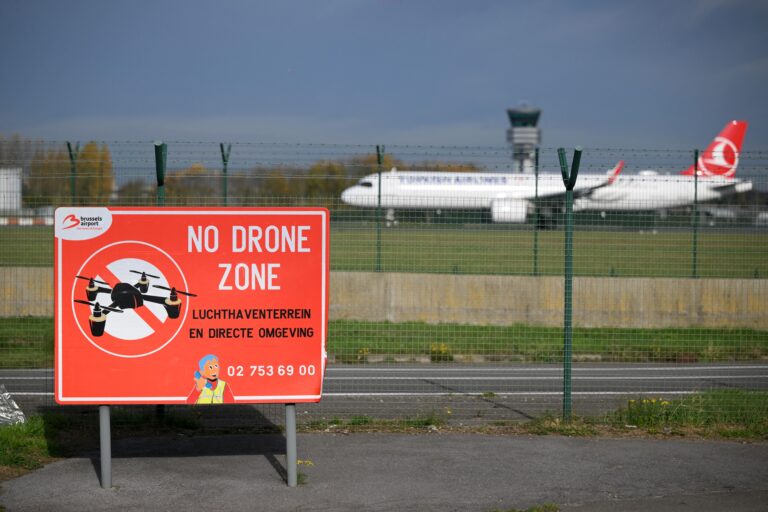Britain, France, and Germany have jointly deployed specialized anti-drone units to Belgium as part of a coordinated effort to enhance security measures in the region. The move comes amid rising concerns over the threat posed by unmanned aerial vehicles near critical infrastructure and high-profile events. This tripartite initiative underscores the growing emphasis European nations are placing on counter-drone capabilities to address evolving security challenges.
Britain France and Germany Strengthen Security with Joint Anti-Drone Deployment in Belgium
In a concerted effort to enhance aerial security, Britain, France, and Germany have launched a collaborative initiative deploying specialized anti-drone units within Belgium. This tri-national operation aims to counter the evolving threat posed by unauthorized and potentially hostile drone activities, particularly in sensitive zones such as government buildings, critical infrastructure, and international summits. The deployment leverages cutting-edge drone detection and neutralization technologies, emphasizing rapid response and coordinated communication among the involved forces.
Key objectives of the deployment include:
- Real-time surveillance and tracking of unauthorized drone incursions
- Neutralization of suspicious drone activity through electronic jamming and interception
- Sharing intelligence and technical expertise across participating nations
- Strengthening the European framework for drone-related security threats
| Country | Role | Technology Highlight |
|---|---|---|
| Britain | Operational command and coordination | Advanced radar drone detection |
| France | Electronic warfare and drone jamming | Signal disruption systems |
| Germany | Rapid response and interdiction teams | Mobile drone interception units |
Tactical Advantages and Operational Challenges of Multinational Drone Defense Teams
Pooling resources from Britain, France, and Germany enhances the ability to counter increasingly sophisticated drone threats along critical Belgian airspace. Each nation brings specialized technology and expertise, creating a layered defense network that benefits from diverse tactical perspectives. Key advantages of this multinational collaboration include:
- Shared intelligence and early-warning systems enabling rapid threat identification.
- Deployment flexibility with cross-border operational capabilities.
- Enhanced electronic warfare measures by combining distinct jamming and tracking technologies.
- Interoperable communication protocols reducing response times in dynamic scenarios.
However, synchronization across different military doctrines and equipment presents notable operational hurdles. Aligning command hierarchies and rules of engagement requires continuous coordination to avoid delays during high-pressure incidents. Challenges extend to:
- Differences in legal frameworks governing airspace and use-of-force policies.
- Logistical complexities including maintenance of varying drone countermeasure systems.
- Language barriers affecting real-time communication.
- Standardization of training exercises to ensure cohesive unit performance.
| Aspect | Advantage | Challenge |
|---|---|---|
| Intelligence Sharing | Faster threat detection | Information security protocols |
| Command Structure | Unified operational command | Hierarchy and jurisdiction |
| Technology | Combined technical strengths | Interoperability issues |
| Communication | Improved coordination | Language differences |
Strategic Recommendations for Enhancing European Airspace Surveillance and Drone Countermeasures
To address the rising challenges posed by unauthorized drone activities in critical European airspaces, it is imperative to adopt a unified, technologically advanced approach. Key steps include:
- Enhanced radar and sensor networks capable of detecting low-altitude, small unmanned aerial vehicles (UAVs) in real time.
- Cross-border intelligence sharing among EU member states to swiftly identify emerging drone threats and tactics.
- Joint operational training exercises for anti-drone teams, ensuring streamlined engagement protocols and rapid deployment under diverse scenarios.
Simultaneously, investing in multi-layered countermeasure technologies is critical to maintaining controlled airspace integrity. These can be summarized as follows:
| Countermeasure | Functionality | Deployment Advantage | ||||||||||
|---|---|---|---|---|---|---|---|---|---|---|---|---|
| Jamming Systems | Disrupts drone communication links | Quick neutralization | ||||||||||
| Drone Capture Nets | Physically intercepts drones mid-flight | Non-destructive and recovery-friendly | ||||||||||
| Directed Energy Weapons | Uses focused lasers to disable drone
To address the rising challenges posed by unauthorized drone activities in critical European airspaces, it is imperative to adopt a unified, technologically advanced approach. Key steps include:
Simultaneously, investing in multi-layered countermeasure technologies is critical to maintaining controlled airspace integrity. These can be summarized as follows:
|




